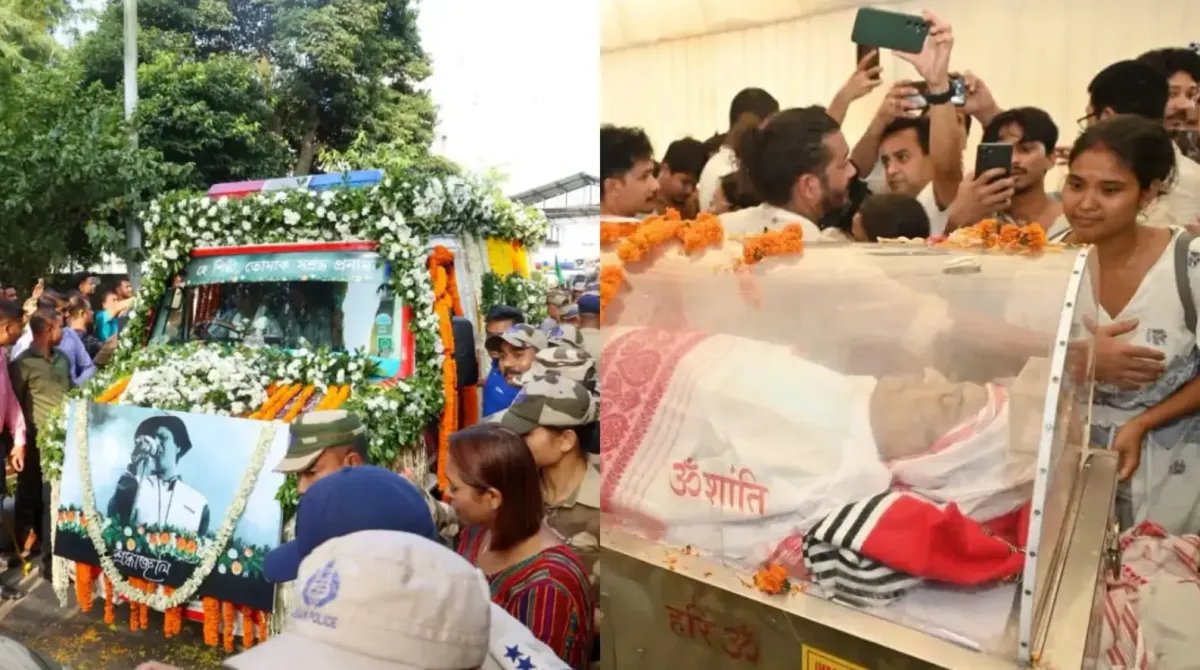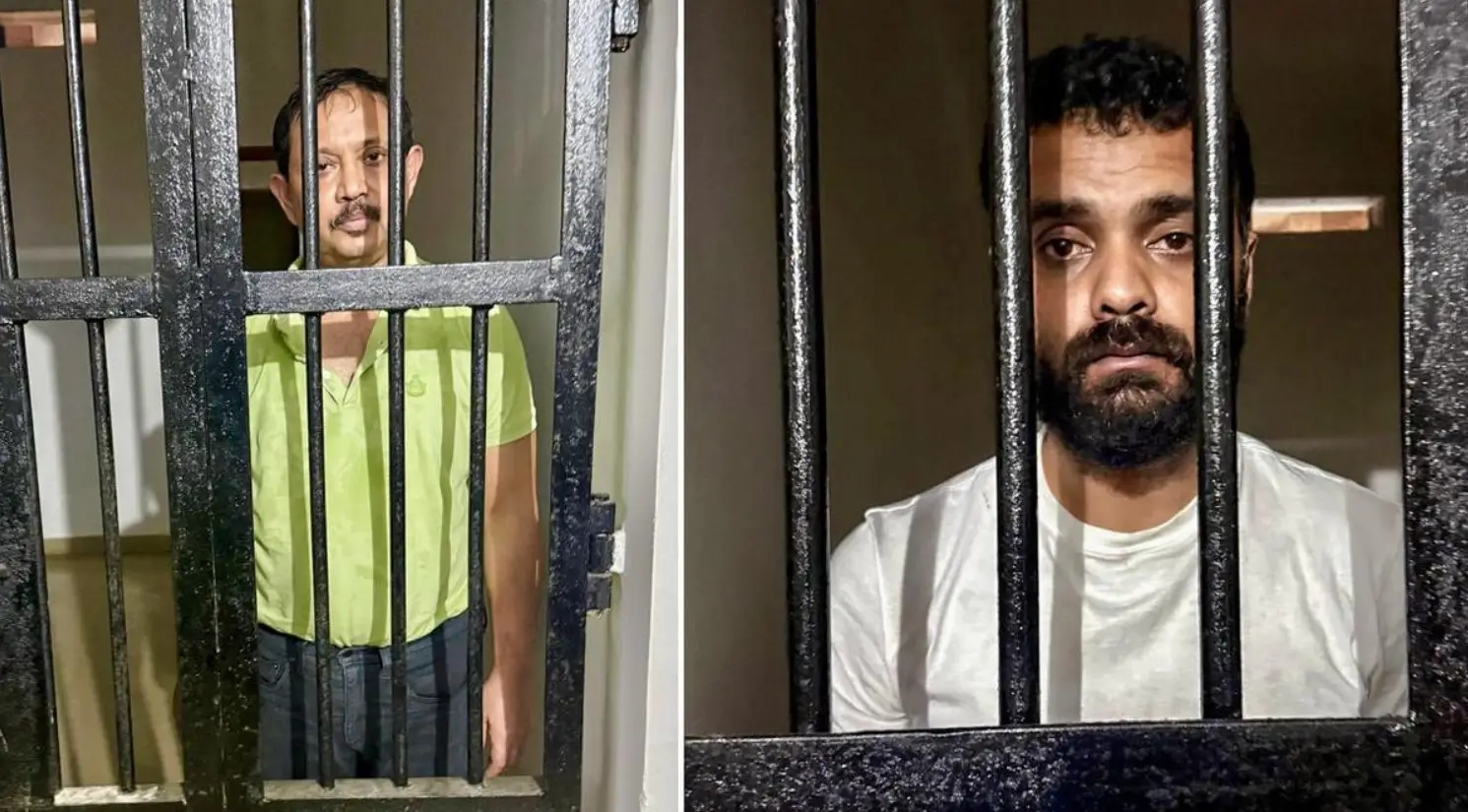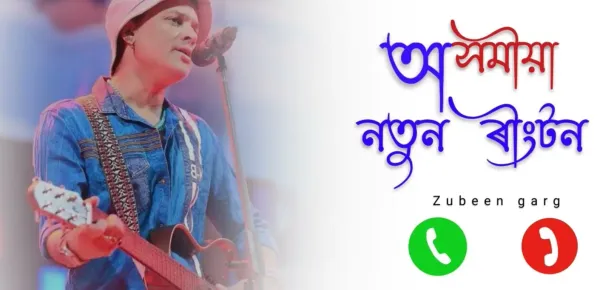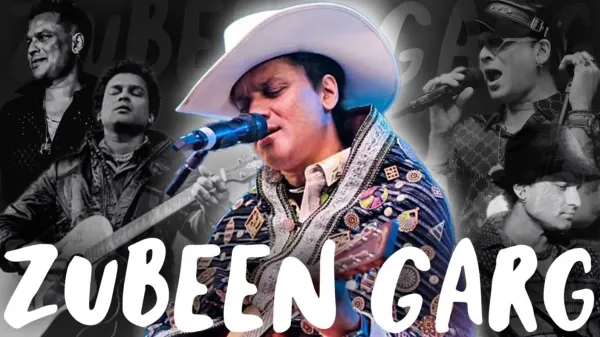7 Revealed Facts About Zubeen Garg Death That No One Told You

1. Introduction: the shock behind zubeen garg death
When news broke of zubeen garg death, the entire region—and far beyond—stood still. It felt like a collective gasp: how could one of India’s most beloved voices vanish so suddenly and mysteriously? In this article, we peel back layers of narrative, rumor, evidence, and grief to present a thorough, nuanced, and humane account of what is known, what is disputed, and what remains unanswered.
The phrase “zubeen garg death” is more than a search term—it is a portal into a tragedy, into the silences behind headlines, and into the hopes of justice. My goal here is to treat this subject with respect, compassion, and rigor, so that readers, fans, and investigators alike can walk through the facts, ask the right questions, and understand the legacy. As we go, you'll find internal links to deeper explorations (for instance, the Legal Action & FIRs Filed or Key Witnesses & Statements), so you can jump directly to the parts you want.
Let’s begin not with rumors, but with who Zubeen Garg was—and then trace the path that led to that fateful September day.
2. Who Was Zubeen Garg? A Brief Biography

To understand the depth of grief surrounding zubeen garg death, we must first remember the life he lived. Born on November 18, 1972, as Zubeen Borthakur (later adopting “Garg” as a stage name), he emerged from humble beginnings in Assam, with a fierce passion for music. (Wikipedia)
His mother, Ily Borthakur, was a dancer and vocalist, and the arts pulsed in his home from early on. The tragic death of his sister, Jonkey Borthakur, in a car accident in 2002 had an enormous emotional impact on him—and many say it shaped his musical depth and sensitivity. (India Today)
Over three decades, Zubeen worked not just as a singer, but as a composer, lyricist, actor, director, multi-instrumentalist, and cultural ambassador. He is credited with singing in 40+ languages and dialects—Assamese, Hindi, Bengali, Boro, Mising, Nepali, and many more. (Wikipedia) From local folk to Bollywood hits, his range was astonishing.
His breakthrough in broader national consciousness came with Bollywood songs such as “Ya Ali” (in the film Gangster) and others. (The Times of India) But even as he traversed commercial success, he remained deeply rooted in Assamese culture, performing Bihu, folk, and regional forms with authenticity.
Along the way, Zubeen recorded tens of thousands of songs (some sources say over 40,000). (Wikipedia) He was not just a celebrity—he was a phenomenon, especially in Assam, where he was called “the voice of a generation.” (www.ndtv.com)
He balanced mainstream ambition and regional heart. Many fans saw him not just as a singer, but as an identity-bearer, a pride, an emotional anchor. That is why zubeen garg death sent ripples through hearts, not just media.
3. Zubeen’s Rise: From Assam to National Fame
Zubeen’s journey reads like a script of grit, talent, and audacity. He started releasing albums from his late teens. In Assam, his early works resonated with local audiences, his voice becoming synonymous with modern Assamese music. (The Times of India)
But he didn’t remain bound to regional circuits—he ventured into the Hindi and Bengali industries. The song “Ya Ali” in 2006 captured wide attention, opening doors in film music. (The Times of India) He also sang in Bengali cinema and worked on national projects. Over time, he bridged the local and the pan-Indian.
What made his ascent special was that he didn’t abandon his roots. He remained involved in Assamese films, cultural programs, activism, and social themes. Many saw him as the voice that fused tradition with modernity. His emotional singing style, ability to weave folk motifs into contemporary frames, and deep connection to his audience allowed him to transcend being “just a singer.”
By the time 2025 came around, Zubeen was not just a star—he was a legacy in motion. So when zubeen garg death came, it wasn’t the loss of a popular singer—it was the shuttering of a voice many felt represented them.
4. The Day He Died: Date, Place & Context
The tragedy occurred on September 19, 2025. On that day, Zubeen was in Singapore to attend and perform at the North East India Festival (NEIF). (CNA Lifestyle)
The festival organizers had arranged a yacht outing or sea event as part of the celebration. Some news initially described it as a scuba dive; later clarifications suggest he was swimming off St. John’s Island (or near that coastal area) without a life jacket. (The Indian Express) According to Assam’s Chief Minister, Zubeen had “refused to wear a life jacket.” (The Indian Express)
At some point during this sea outing, Zubeen is said to have suffered a seizure or sudden medical emergency while swimming. (India Today) He was discovered floating, unconscious, and was brought to Singapore General Hospital (SGH). (The Indian Express) Doctors attempted to revive him, but he was officially declared dead at around 2:30 PM (IST). (The Indian Express)
The cause on the death certificate was recorded as “drowning.” (The Times of India) From that moment, the focus shifted from grief to questions—how did it happen, what medical anomalies were at play, and whether accountability can be found.
5. Event in Singapore: North East India Festival
Zubeen’s presence in Singapore was not casual—he went as a cultural brand ambassador for the North East India Festival. (The Indian Express) That festival aimed to showcase Northeastern art, culture, music, dance, food, and heritage to an international audience.
Part of the itinerary included a yacht or sea outing, presumably to give artists and delegates a maritime experience. It is during this outing that tragedy struck. Some reports said “scuba diving,” but later officials clarified the event was swimming-based, not deep diving. (CNA Lifestyle)
Organisers and managers arranged safety support. Yet questions are now raised: Were life jackets provided and insisted upon? Was medical support on-site? Did organizers brief participants about marine safety and risks? Those questions have become central in investigations and FIRs. We will dig into that in Legal Action & FIRs Filed as well as Conflict Theories & Foul Play Claims.
6. Swimming vs Scuba: What Really Happened?
Early in the media coverage, terms like “scuba diving accident” circulated widely. (CNA Lifestyle) But that description began to shift as officials clarified: Zubeen was not engaged in scuba diving with gear, but was swimming during a boat outing—likely at or near surface level—without a life jacket. (The Indian Express)
According to Assam CM, lifeguards had warned him to wear a life jacket but he declined. (The Indian Express) Also, eyewitnesses said he had emerged from one swim and gone again, during which he collapsed. (India Today) Some reports mention seizures. (India Today)
Which version is correct? The slowly converging narrative suggests:
- It was not a deep-sea scuba dive.
- It was a surface swimming activity.
- He was not wearing safety gear.
- He experienced a sudden medical emergency, possibly a seizure.
- Drowning was the mechanism that caused death, but the precipitating event (seizure, trauma, poisoning) is under investigation.
In short: “swimming + medical event + drowning” is the likely chain of events.
7. Timeline of the Final Hours
Here is a composed timeline based on available reports:
- Morning to early afternoon
- Zubeen and other participants board a yacht or sea platform as part of the festival’s outing.
- They engage in swimming or water-based activity.
- Return and second swim
- After one swim, participants return to the boat. Zubeen reportedly ventures again into the water. (India Today)
- At this point, he reportedly suffers a seizure or sudden collapse underwater. (India Today)
- Rescue & retrieval
- Witnesses or crew spot him unresponsive in the water. (The Indian Express)
- CPR is attempted, possibly on deck or immediately while being brought to land. (www.ndtv.com)
- Hospital transfer
- He is transported to Singapore General Hospital (SGH). (The Indian Express)
- Medical staff attempt life-saving measures in ICU. (The Indian Express)
- Declaration of death
- At around 2:30 PM IST, medical team pronounces him dead. (The Indian Express)
- Certifications & repatriation
- A death certificate is issued, listing cause as “drowning.” (The Times of India)
- His body is flown back to India and later to Assam, where public mourning is organized. (www.ndtv.com)
This timeline may adjust as investigations produce more precise forensic timestamps, but for now, it provides a coherent narrative.
8. Rescue Efforts & Hospitalization
When someone collapses in the sea, immediate rescue is crucial. In zubeen garg death, accounts mention that CPR was attempted right away—either onboard or next to the shore. (www.ndtv.com) The urgency of those moments is often the difference between survival and fatality.
Yet questions arise: Was there a trained lifeguard crew present? Were there first-aid kits, defibrillators, oxygen supplies? Did the organizers have contingency rescue protocols? These are central to the inquests and FIRs.
Once onshore, Zubeen was rushed to Singapore General Hospital (SGH), where attempts to revive him continued in the intensive care unit. (www.ndtv.com) Unfortunately, the medical team could not stabilize him. The official declaration of death was made at 2:30 PM IST. (The Indian Express)
The hospital likely performed a postmortem, and the Singapore authorities provided a death certificate noting “drowning.” (The Times of India) Concurrently, forensic samples—viscera, toxicology—were collected for deeper examination. (www.ndtv.com) The integrity, chain of custody, and timing of those steps will matter greatly in legal proceedings and public trust.
9. Official Cause: Drowning & Death Certificate
“The cause of death is drowning” is not merely a headline—it’s a legal and forensic statement. In the case of zubeen garg death, authorities confirmed via the death certificate issued by Singapore that drowning was the cause. (The Times of India) Assam’s Chief Minister has publicly cited that certificate. (www.ndtv.com)
However, “drowning” is a mechanism of death, not necessarily a full explanation. It tells us how he died (i.e. submersion, airway flooding), but not necessarily why he ended up in that state—whether due to a medical event (seizure, heart attack), negligence, foul play, or external factors.
Hence, the focus on viscera and toxicology reports, investigative findings, and witness testimonies becomes crucial. We will analyze those in upcoming sections. But for now, the open question is: drowning confirmed—why? That is not yet conclusively answered.
10. Toxicology & Viscera Report: Was Poisoning Involved?
In high-profile deaths with ambiguous circumstances, poisoning becomes a speculative trigger. In zubeen garg death, such speculation caught immediate attention.
The viscera report (internal organs, tissue samples) was sent to the Central Forensic Science Laboratory (CFSL) in New Delhi. (www.ndtv.com) Early reports state the police have received the report, and it has been forwarded to expert doctors for analysis. (www.ndtv.com)
One news story cited:
“Cops Receive Key Report On Zubeen Garg’s Death Amid Poisoning Angle Probe” (www.ndtv.com)
The final toxicology outcome may affirm or reject the possibility of poisoning, but public commentary has already erupted. Some claims allege that his manager or organisers might have delayed medical attention or misinterpreted alarming signs (frothing, unusual symptoms) as acid reflux or something benign. These claims are yet to be legally substantiated. (The Times of India)
However, according to recent statements, a postmortem done at Gauhati Medical College and Hospital (GMCH) concluded that poisoning was not a cause of his death. (Wikipedia) That assertion will be critical in courts, but skepticism remains in many quarters.
The toxicology and viscera findings will play a decisive role in legal outcomes. If they detect any toxic substance, motive questions deepen; if they clear poisoning, then medical or procedural lapses become keener focus.
11. Conflicting Theories & Foul Play Claims
Whenever a beloved icon dies suddenly, alternative narratives emerge, especially if certain red flags are perceived. In zubeen garg death, several conflicting theories now compete for public attention.
- Accident + medical event: the most widely accepted version is that Zubeen suffered a seizure or sudden collapse while swimming (without life jacket) and drowned.
- Negligence by organizers or manager: some allege that safety protocols were lax, that medical help was delayed, or warnings were ignored.
- Concealed medical condition or induced event: a fringe suspicion is that an external agent or foul play initiated the medical collapse.
- Delayed reportage or misinformation: fake postmortem reports circulated, social media rumors accelerated speculation. (The Times of India)
The Assam Chief Minister initially ordered an SIT probe and allowed that foul play could not be ruled out. (The Times of India) Meanwhile, the Congress party and public figures demanded a CBI investigation. (The Times of India)
These conflicting narratives put pressure on investigators, media, and courts to be extra cautious. The presence or absence of motive, forensic clarity, and witness credibility will determine which theory prevails.
12. The Role of Organisers & Manager
No analysis of zubeen garg death is complete without scrutinizing the role of event organizers and his personal manager.
Reports suggest FIRs were filed naming the event organiser and the manager, alleging negligence, failure in safety protocols, delayed medical attention, or misleading explanations. (The Times of India) According to some accusations, the manager misinterpreted symptoms like foaming at the mouth, attributing it to acid reflux rather than a medical emergency. He allegedly delayed urgent care. (The Times of India) Some allege that the manager had taken over control of the yacht in panic and uttered “Jabo De, Jabo De” (“Let him go”) while Zubeen struggled. Those are dramatic claims that must be proven or refuted via evidence and testimony. (Wikipedia)
On the other side, some defense claims argue Zubeen was an experienced swimmer, who didn’t need help, or that all reasonable precautions were in place. These competing claims require cross-examination, verification of logs, witness statements, and technical data (boat logs, communication records, medical equipment logs).
In any case, the manager and organisers are among those under direct legal scrutiny, and how the law interprets their role may decide whether negligence or criminal culpability is assigned.
13. Legal Action & FIRs Filed

The public outcry following zubeen garg death triggered legal responses. Multiple FIRs were lodged in Assam, naming the manager, the event organiser, and possibly others, under charges of negligence, culpable homicide without intent, or mismanagement. (The Times of India)
To ensure thorough investigation, the Assam government formed a Special Investigation Team (SIT). (The Times of India) The SIT is headed by Special DGP Munna Prasad Gupta. (The Indian Express) This SIT is tasked to coordinate with Singapore, gather evidence, and eventually file a charge sheet. (The Indian Express) The Assam Cabinet has sought a fast-track court to expedite hearings. (The Times of India)
Further, a judicial commission (headed by Justice Soumitra Saikia of Gauhati HC) was ordered to ensure impartial public inquiry. (The Economic Times) The commission has called for public statements with supporting documents. (The Times of India)
These legal pathways indicate that the case is being treated not merely as a tragic accident but as one requiring institutional accountability and transparency.
14. Assam’s Response: State Mourning & Probes
Assam’s government responded swiftly and emotionally in the wake of zubeen garg death. Chief Minister Himanta Biswa Sarma announced a three-day state mourning (20–22 September) to mark the depth of state grief. (The Times of India) Later, that mourning extended to cover funeral day as well. (Wikipedia)
The CM also ordered a comprehensive probe, mandating the SIT, liaising with Singapore authorities, and seeking all postmortem documentation. (The Times of India) The Assam Cabinet passed resolutions to request a fast-track court and assign a special public prosecutor to this unique investigation. (The Indian Express)
By taking these steps, state officials signaled that zubeen garg death is not simply a personal tragedy but one with public stakes—cultural, legal, and political.
15. SIT & Judicial Commission Investigation
The Special Investigation Team (SIT) and the Judicial Commission form the twin pillars of accountability in this case. The SIT, already active, collects evidence, interviews witnesses, liaises internationally, and eventually compiles a charge sheet. (The Times of India) The commission, led by a judge, aims to supervise the process, invite public insight, and maintain transparency. (The Economic Times)
Justice Soumitra Saikia has called for public submissions with supporting documents. (The Times of India) This is a rare step, signaling that the inquiry will draw from beyond closed doors, including possibly testimonies from spectators, crew, or bystanders.
Their shared mandate is to ensure that scrutiny is substantive, impartial, and resistant to political or social pressure.
16. Singapore Cooperation & Cross-Border Probe
Because the incident occurred in Singapore, cross-national coordination is essential. Assam police, via the SIT, plan to travel to Singapore to engage with local authorities and obtain documents. (The Indian Express) The Singapore High Commission has already provided the death certificate confirming drowning. (www.ndtv.com)
Singapore-based witnesses (Assamese expatriates present during the yacht outing) have been summoned or have come to India to give statements under interrogation by Assam’s CID. (www.ndtv.com) Two key expat witnesses—Abhimanyu Talukdar and Tanmoy Phukan—recently appeared before CID. (www.ndtv.com) Their testimonies, coordinated between jurisdictions, may fill gaps in the timeline inside Singapore.
International legal assistance, forensic data exchange, and document authentication from Singaporean maritime or hospital records will be pivotal. No corner of the investigation can ignore the cross-border nature of zubeen garg death.
17. Key Witnesses & Statements
Witness testimonies often become keystones in such investigations. In zubeen garg death, several witnesses have emerged:
- Expats in Singapore: Two Assamese nationals, Abhimanyu Talukdar and Tanmoy Phukan, who were present during the yacht event, have given statements before Assam’s CID. (www.ndtv.com)
- Crew members and organisers: Boat pilots, safety personnel, and on-site staff may testify about safety protocols, rescue timing, and boat logs.
- Other participants: Fellow artists or delegates who swam or observed Zubeen before the collapse.
- Medical and forensic experts: Doctors, forensic pathologists, and toxicologists who examined his body or organs.
These statements may confirm or challenge the timeline, show delays or lapses, or rebut speculation. A consistent narrative from multiple credible witnesses can tilt the balance toward a coherent explanation.
18. Social Media, Fake Reports & Misinformation
In the aftermath of zubeen garg death, social media exploded—not just with grief but with misinformation. A fake postmortem report circulated widely. Assam CID swiftly denounced it and warned of strict legal action. (The Times of India)
False claims, doctored images, contradictory rumors—these proliferated. Some posts asserted foul play, poisoning, or conspiracy without basis. Such misinformation can mislead public sentiment, pressure investigations unfairly, and damage the reputations of innocent parties.
It is thus vital that reporting and commentary adhere to verification, citing sources, resisting sensational claims, and acknowledging uncertainty. Ethical responsibility in media and public discourse is key to ensuring justice, not chaos.
19. Legacy: Music, Influence & Cultural Impact
zubeen garg death triggered not just mourning but reflection on what was lost. Zubeen’s legacy goes beyond charts and hits; it encompasses cultural identity, emotional resonance, musical exploration, and regional pride.
His songs are woven into Assamese households, played at festivals, invoked in celebrations, and mourned at funerals. “Ya Ali” may have brought him national fame, but Mayabini Ratir Bukut became an anthem of Assam’s grief during his final journey. (India Today)
As a multi-language singer, he embodied cross-cultural dialogue. As a committed regional artist, he preserved indigenous forms. His journey affirmed that talent from Assam need not be boxed. To many, his death feels like the extinguishing of an era—a voice that spoke for millions in tones they recognized.
His legacy, therefore, is both musical and symbolic: a reminder that art can carry identity, that fame must remain connected to roots, and that the sudden end of a luminous life leaves both silence and questions.
20. Fan Reactions & Public Mourning
When zubeen garg death became known, waves of grief erupted across Assam and beyond. Thousands turned out across Guwahati to line the route from airport to his residence. (www.ndtv.com) The public viewing at the Arjun Bhogeswar Baruah Sports Complex in Guwahati saw crowds paying homage. (Wikipedia) Social media flooded with tributes, photos, memories, and tearful nostalgia.
Videos went viral—fans singing his songs in streets, holding candles, posters, and lamenting that his voice now falls silent. The mourning felt personal. He was more than a celebrity; he was Part-Of-Us.
That public grief exerted real pressure on authorities to act decisively, transparently, and accountably. In many ways, the collective mourning became a demand for truth.
21. Media Coverage & Narratives
Media coverage framed zubeen garg death in multiple narratives:
- Tragic accident: emphasizing the suddenness, the sea, the health event.
- Mystery & conspiracy: speculating poisoning, negligence, foul play.
- Heroic life narrative: recounting Zubeen’s impact, his journey, the void left behind.
- Political and legal accountability angle: covering FIRs, demands for inquiry, government actions.
Ethical journalism demanded verifying facts and distinguishing claims from evidence. Some outlets circulated unconfirmed reports; others waited for official statements. The tension between speed and accuracy became a visible fault line in reporting.
My approach here is to lean on multiple credible sources (Times of India, NDTV, Indian Express) and guard against repeating rumors without caveats. Whenever I present a theory or claim, I note its provisional nature unless supported by official findings.
22. Lessons Learned: Safety, Events, Transparency
The tragedy of zubeen garg death is not just personal; it points to systemic weak spots and opportunities for improvement. Some lessons to carry forward:
- Strict enforcement of safety protocols: Life jackets, rescue teams, first aid, medical support must be non-negotiable in water activities.
- Medical screening and risk assessment: Participants, especially older ones, should be assessed for underlying conditions before strenuous water engagement.
- Clarity in liability and accountability: Organisers, managers, and stakeholders should have clear roles and responsibilities, documented protocols, and liability frameworks.
- Transparent investigation processes: Timely public updates, evidence disclosure, engagement with independent experts can enhance trust.
- Media responsibility: Avoid sensational claims, verify documents before sharing (e.g. fake PM reports), maintain balance between public right to know and respect for privacy.
For fans and organizers alike, mourning must transform into reflection—so that no more artists or participants are lost due to oversight.
23. FAQs about zubeen garg death
Q1: When exactly did Zubeen Garg die?
He died on 19 September 2025, around 2:30 PM (IST), in Singapore. (The Indian Express)
Q2: What is the official cause?
The death certificate lists drowning as the cause of death. (The Times of India)
Q3: Was he scuba diving or swimming?
Contrary to early reports, authorities clarifed he was swimming—not scuba diving—and was not wearing a life jacket. (The Indian Express)
Q4: Was poisoning involved?
The viscera and toxicology report is under review. However, a postmortem in Assam reportedly cleared poisoning as a cause. (Wikipedia)
Q5: Are FIRs filed against anyone?
Yes, FIRs have been filed against the event organiser, his manager, and possibly others, alleging negligence. (The Times of India)
Q6: What investigations are underway?
A Special Investigation Team (SIT) has been formed, and a judicial commission is active to ensure transparency and public involvement. (The Times of India)
Q7: Has any verdict been reached yet?
No definitive verdict has been announced at this time. The investigation, legal scrutiny, and forensic work are ongoing.
24. Is There a Verdict Yet?
As of now, no final verdict has been delivered. The SIT is working toward filing a charge sheet. (The Indian Express) The judicial commission is collecting public submissions. (The Times of India) Courts, cross-border forensic processes, and extended timelines mean that legal resolution will take months—or even longer.
Until the courts rule, the narratives will remain contested, and public scrutiny will remain high. The next interim judgments—whether to admit certain evidence, question key witnesses, or allow public disclosures—may shape how “truth” is ultimately accepted or contested.
25. What Happens Next? Possible Scenarios
Here are potential pathways forward for zubeen garg death:
- Accident conclusion: Investigators conclude it was a tragic incident with no criminal liability; legal proceedings close.
- Negligence finding: Organisers or manager found negligent, criminally liable for culpable homicide without intent.
- Foul play uncovered: The probe surfaces evidence of deliberate harm (poisoning or external cause), leading to murder charges.
- Settlement or plea bargain: Parties agree to out-of-court settlements, or plea deals are arranged, especially if evidence is inconclusive.
- Appeals & prolonged trials: Even after verdict, appeals may prolong resolution, keeping public debate alive.
Which scenario unfolds depends heavily on the forensic clarity, credibility of witnesses, and judicial courage to hold powerful people accountable.
26. How Assam & Music Community Commemorate Him
Even as investigations continue, public mourning turns into memorialization. Assam is planning memorials (in Guwahati, Jorhat) to honor Zubeen’s legacy. (Wikipedia) His ashes were carried in a public procession, and the 13th-day ceremony (Adyashraddha) drew thousands. (Wikipedia)
Musicians hold tribute concerts, fans sing his songs in unison, and cultural bodies pledge to preserve his recorded works and promote upcoming artists in his name. In that sense, zubeen garg death becomes less an endpoint and more a call to keep his spirit alive.
27. Ethics & Responsibility in Reporting Deaths
When a public figure dies under uncertain conditions, the tension between public interest and individual dignity becomes acute. The wave of misinformation following zubeen garg death underscores some key ethical responsibilities:
- Verify documents before publishing (e.g. fake postmortem).
- Use cautious, qualified language where evidence is not settled.
- Respect grieving families’ privacy.
- Distinguish between rumors and claims under investigation.
- Provide context and avoid fueling speculation.
As a writer addressing this subject, I aim to respect facts and integrity, avoiding sensationalism or defamation while still drawing attention to the deep questions at stake.
28. Personal Reflection: What Zubeen Meant to Me
Writing about zubeen garg death is not just reporting; it's honoring a voice that has haunted my playlists, my memory, my emotional geography. I remember hearing Ya Ali and thinking: here is a voice that carries longing, that bridges languages, that feels like an inner echo.
When I first learned of his passing, I sat stunned, wondering how a man so alive in many hearts could vanish so abruptly. In writing this article, I feel my grief echoing your grief, if you came here seeking clarity or catharsis.
But grief also demands clarity, accountability, reflection. I offer this narrative not to close the book, but to open dialogues—with investigators, with public institutions, with each of us as cultural participants.
29. Summary of Key Revelations
- zubeen garg death occurred on September 19, 2025, in Singapore, during a festival sea outing.
- The death certificate cites drowning as official cause.
- He was swimming (not scuba diving) and reportedly not wearing a life jacket.
- A seizure or sudden medical collapse is suspected to have precipitated drowning.
- Toxicology and viscera findings are under review; recent statements suggest no poisoning.
- FIRs, SIT, and judicial commission are active in investigation.
- Witnesses, ex-pat statements, cross-border cooperation, and forensic integrity are key to outcome.
- Misinformation, fake reports, and sensational claims complicate public discourse.
- His death has shaken Assam, inspired massive mourning, and triggered calls for accountability.
- The ultimate verdict remains pending—what unfolds will shape not only justice for Zubeen, but precedents for how we honor and investigate public identity in tragedy.
30. Conclusion: A Legacy Beyond His Death
In recounting zubeen garg death, we confront more than a tragic end—we confront how societies reckon with loss, memory, and accountability. Zubeen Garg was not merely a singer; he was a bridge between cultures, a symbol of Assam’s voice, and a living archive of emotion.
His sudden departure leaves us with questions that demand answers: what precisely caused his collapse? Who bears responsibility? Will truth emerge or be obscured? In the interlude, his music, his legacy, and his imprint remain alive.
As we await judicial clarity, may we also hold space for grief, for reflection, and for honoring the life that was. His voice may fall silent in the sea, but in memory, it echoes forever—if we choose to listen.
If you like, I can also produce a shorter summary version or a timeline infographic. Would you like me to adapt this for social media or a press release?




